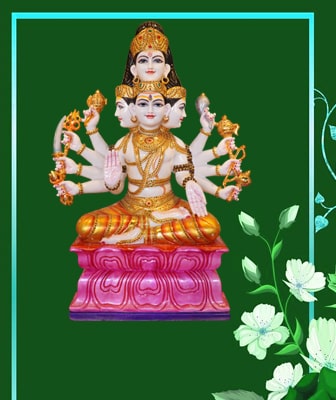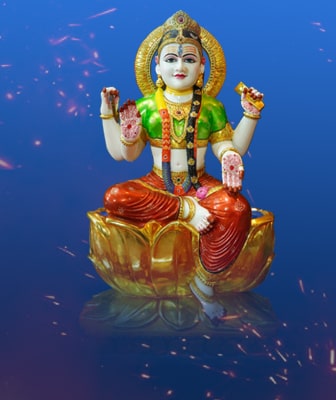Panchadasi Mantra-Fantasy and Reality
The main motto of this article is to establish truth while condemning false beliefs with regards to Panchadasi mantra.
Introduction
Indian spiritual science is like an ocean filled with many customs and traditions. Every tradition has its own importance, and based on their tendencies (samskaras), they follow a tradition.
No matter what tradition one follows, they should spractice four things in spirituality: Truth: You must be honest in your worship. Self-evident: always authenticate before you worship; purity: worship with utmost care; and avoiding malpractice: do not alter anything; accept it as it is.One who crosses the boundary of the above four practices will be invited with a red carpet to the realm of Hell.
Veda and Tantra – A thin layer
Two main Shastras are available around the world:Vedas and Tantra Shastras. While the former is followed by Dakshinachara followers, the latter is followed by Kaula Chara, Kapalika Achara, Vama Chara, and a few other tradition followers.
There are 64 Tantra Shastras available today, offered by Lord Rudra to this world. The ancient Tantra Shastras like Rudra Yamala Tantra, Gnanarnava Tantra, and Vishnuyamala Tantra are the authenticated Shastras in Tantra Shastras.
In Tantra Shastra, Kaulachara is the prime and ancient tradition, followed by Kapalika and other traditions Worship in Kaulachara is very stringent. For instance, before doing achamanam, one should have tambulam mixed with camphor, cloves and then perform achamanam. There is also a custom to offer Non-vegetarian and Wine in this tradition and have it with utmost devotion. This tradition shows the manifestation of God in no time. Kapalika Achara cannot be followed by ordinary people.
Tantra shastra practices differ from Vaidic(Vedic) practice. They match only in one aspect: eternal wisdom. While the Vedas prescribe eternal wisdom, the Tantra describes the practical application of that wisdom. Hence, they should be practiced independently. In tantric sciences, there is a custom one should not perform death anniversary rituals, and are also prohibited from worshipping other deities. No matter what shastra one follows, they arrive at a single destination: Brahman.
Tantra Shastra-Three Vidyas
Tantra shastra mentions three vidyas: Hadi vidya, Kali Vidya, and Sadi Vidya.
Hadi Vidya is the ancient vidya followed by Brahma, Vishnu, Rudra, Indra, Lopa Mudra, and Nandiswara. It is also followed by Kaula Chara, where Shiva is the prime deity and Shakti is the secondary deity.
Kadi Vidya was introduced by Scholars over time. In reality, Kadi Vidya (that is being propagated by its followers to date) is not prescribed in any of the ancient Tantra Shastras.
Matsyendranath, a great yogi and one of the Navanaths, propagated the Kaula Chara tradition (Hadi Vidya) and made the world follow it to the fullest for 200 years.
Kali Vidya is divided into two parts: Krishna Vidya and Sundari Vidya. The former comprises the worship of Goddesses Kali, Tara, Bhuvaneswari, Chinnamasta, Dhumavati, and Bagalamukhi Mahavidyas; the latter comprises the worship of Goddesses Bala Tripura Sundari, Tripura Bhairavi, and Maha Tripura Sundari Mahavidyas.Kali Vidya is followed by the Vama Chara tradition, whose prime deity is Shakti and whose secondary deity is Shiva.
The scholars of the Dakshinachara tradition were unable to digest these customs and traditions and decided to eliminate the deities of the Hadi Vidya.
Birth of Kadi Vidya
Believing that the stringent customs and traditions of the above vidyas could not be followed, the scholars of Dakshinachara's tradition decided to alter them by introducing a new vidya, the Kadi Vidya. The age of Kadi Vidya lies between 700 and 1000 years.
In reality, Kadi Vidya is nothing but Kali Vidya. Kali Vidya was propagated as Kadi Vidya by these scholars, and Sundari Vidya was named Srividya. They eliminated the deity 'Bala Tripura Sundari'of Hadi Vidya by giving her a new name Lalita Devi/lalita Tripura Sundari.
Furthermore, to eliminate and lessen the spread of these vidyas, they wrote 8 tantra shastras: Chandrakal, Kalanidhi, Kuleswari, Barhaspatyam, Bhuvaneswari, and so on, and also authored panchakams like Shubagama Panchakam, Vasista, Sanaka, Sanandana, and Santkumara panchakams to accompany them.
In the 12th century, Vama Chara and Uttara Kaula Chara emerged, and Pancha Makara Sadhana was initiated by them. This might also be one of the reasons for the emergence of Kadi Vidya.
One should express love with utmost devotion while worshipping any deity. They should worship her according to the customs prescribed in the concerned shastras. Altering it will accumulate sins in their lives.
Panchadasi Mantra - Fantasy and Reality
Panchadasi Mantra is observed in two traditions. The Panchadasi mantra available today is ‘Kaeila Hreem Hasakahala Hreem Sakala Kreem’. According to many Tantra Shastras, this is a fallacious and misleading mantra. Panchadasi mantra is associated with Bala Tripura Sundari.
Scholars have premaded and propagated that Lopamudra adviced this mantra to Lord Manmadha. Actually, The writers of this mantra mistook the meaning of Adishankara’s Soundarya Lahari 32nd verse and wrote this mantra based on it.
Soundarya Lahari mentions:
Shivaha Shaktihi Kamaha Kshiti Ratha Ravihi Seeta Kiranaha Smaro Hamsaha Chakra ha Tadanu Cha Paramara Harayaha ।।
Based on the Gnararnava Tantra, Shankaracharya explained the glory of the Pancha Dasi mantra. He narrated, "Hakaraam as the shiva beeja mantra; Sakaraam as the shakti beeja mantra; Kakaram as the kama beeja mantra; Lakaaram as the earth (kshiti) mantra. All comprise "Hasakahala." In reality, the mantra preached by Lopamudra to Lord Manmadha was different. The mantra chanted by them was Para Tripura Sundari mantra or Panchadasi mantra. To perceive the complete wisdom of Tripura deities, one should read the Gnanarnava tantram. It clearly mentions the Panchadasi mantra.Additionally,there are 12 varied mantras chanted by Lord Rudra, Lord Brahma, Lord Vishnu, Lopamudra, Manmadha, and so on.
Gnanarnava Tantram says
Shrunu Devi Pravakshyami Lopamudra Vidam Param Kama rajakhya vidyaaya Shaktim Turiyam Cha Sundari Yesha Vidya Kamaraja Puritaiva nasamshayaha Vidyadwaya Vivam Bhadre Durblabham Vijaya Dwaye ।।
Parvati, pay attention to my words. The ultimate mantra, which fulfils all desires, was chanted by the deity Manmadha from Lopamudra.
Yenamupasya Deveshi Kamaha Sarvanga Sundaraha Kamarajo Bhavet Devi Nityeyam Brahama Roopinim ।।
This mantra is the nature of Brahman. Manmadha Chanted this Panchadasi mantra and became a charming deity. He is reputed to be Kama Raja.
Panchadasi Mantra
In reality, according to the Gnanarnava Tantra, the Panchadasi mantra is "Hasakala Hreem Hasakahala Hreem Sakala Hreem". There are three combinations in this mantra: Vakbhava Kutam (hasakala hreem), Kama Raja Kutam (Hasakahala hreem), And Shakti Kutam (Sakala hreem). All these form Panchadasi mantra.
Panchadasi Mantra defined:
'Ha' means Hakaaram, which denotes the god Shiva. 'Sa' Sakaaram signifies Shakti; ‘Ka’ karaam denotes Kama, the tendency to achieve something; and 'la' karaam indicates the philosophy of earth, the tendencies from which thoughts arise.
In 'Hasakala Hreem, mantra Kala,' which exists between Hasa and Hreem, should be destroyed in order to merge with Adiparashakti. One should eliminate their tendencies to reach the state of Bala Tripura Sundari.
When each letter of panchadasi mantra are divided and chanted, they sum up the tryakshari mantra, "Aim Kleem Souh." This beejakshara mantra is Bala Tripura Sundari’s Mantra. In this mantra, ‘Aim’ is Vakbhava Beejam, ‘Kleem’ is Kama Raj Beejam, and ‘Souh’ is Para Shakti Beejam.
Benefits of Panchadasi Mantra Chanting
Sarva Teerthamayi Devi Sarva Deva Swaroopini Sarva Shastra Mayividya Sarva Yogamayi Para ।।
Sarvayagnamayi Samvit Sarva Gnana Swaroopini Sarvadevamayi Sakshat Sarvasoubhagya Sundari ।।
Those who recite this Panchadasi Mantra will attain-
- the benefit of submerging in all the rivers.
- the benefit of worshipping all deities.
- Wisdom of all shastras, deities, and eventually the state of divinity.
- the virtue of performing all yagnas.
- The virtue of worshipping all deities.
- will attain all pleasures.
Conclusion
Panchadasi mantra is akin to a full moon. The moon on the 16th day depicts its complete form; the same is true with Panchadasi. Chanting this mantra will raise you to the agnya chakra and eventually take you to the sahasrara chakra. This is the inner meaning. Worship of a deity with form remains until the agnya chakra. When one goes beyond this chakra, there is no form of deity upasana. Beyond this chakra, one remains in samadhi as the formless deity. Bala Tripura Sundari and Tripura Bhairavi are form deities, and Mahatripura Sundari is a formless deity.
Scholars removed "Hasakala" from the original mantra and altered it with'Ka E I La.' They defined Ka as Shiva beejam, E as Shakti beejam, and I as Kama beejam. This affected all 12 true, varied mantras of the Gnanarnava Tantra. The scholar’s intention (who had written these mantras) was to eliminate Hadi Vidya as they followed Kadi Vidya.
One can praise their admirable deities to the fullest as wished for, but not at the cost of defaming the other deities or altering their wisdom.




